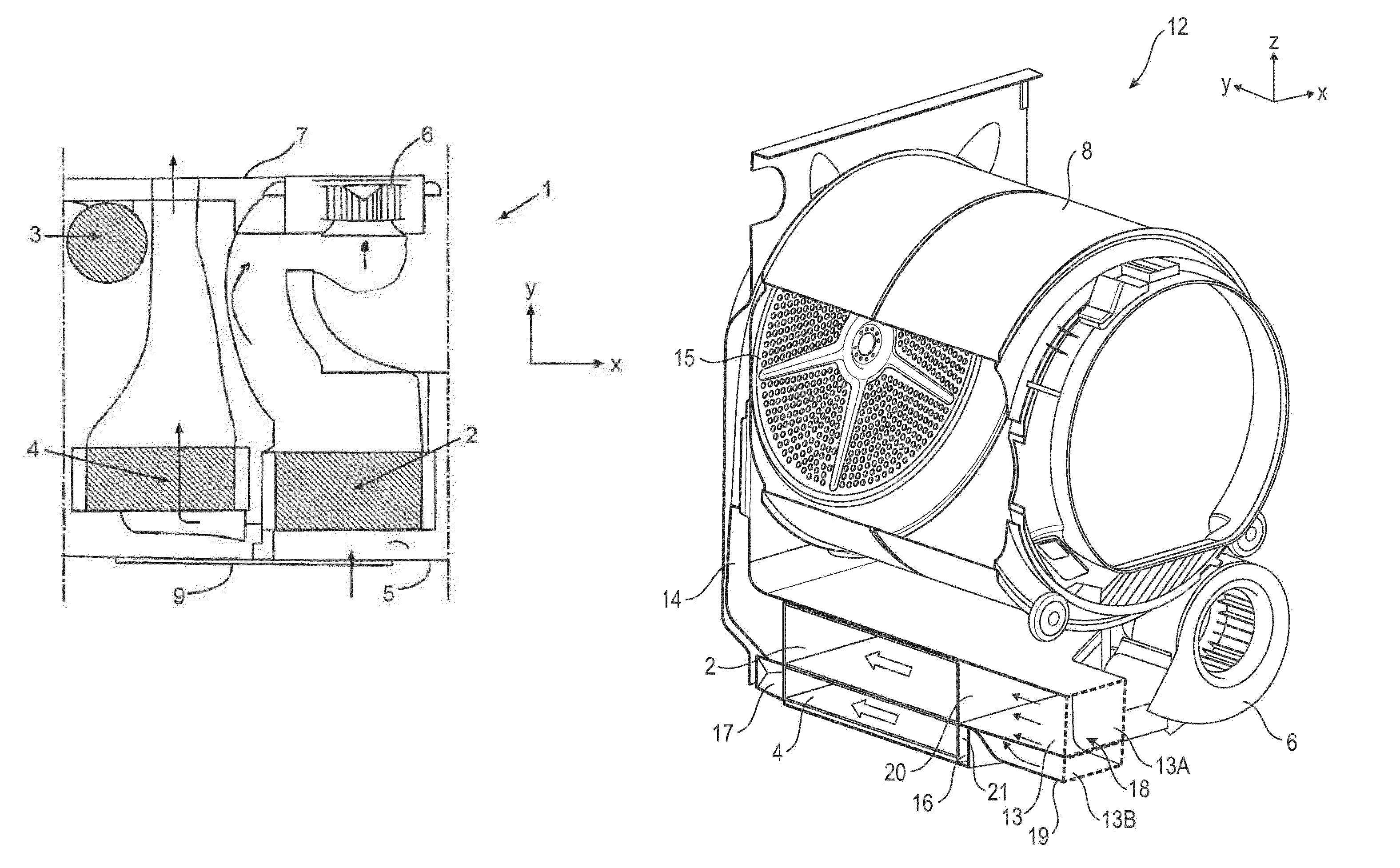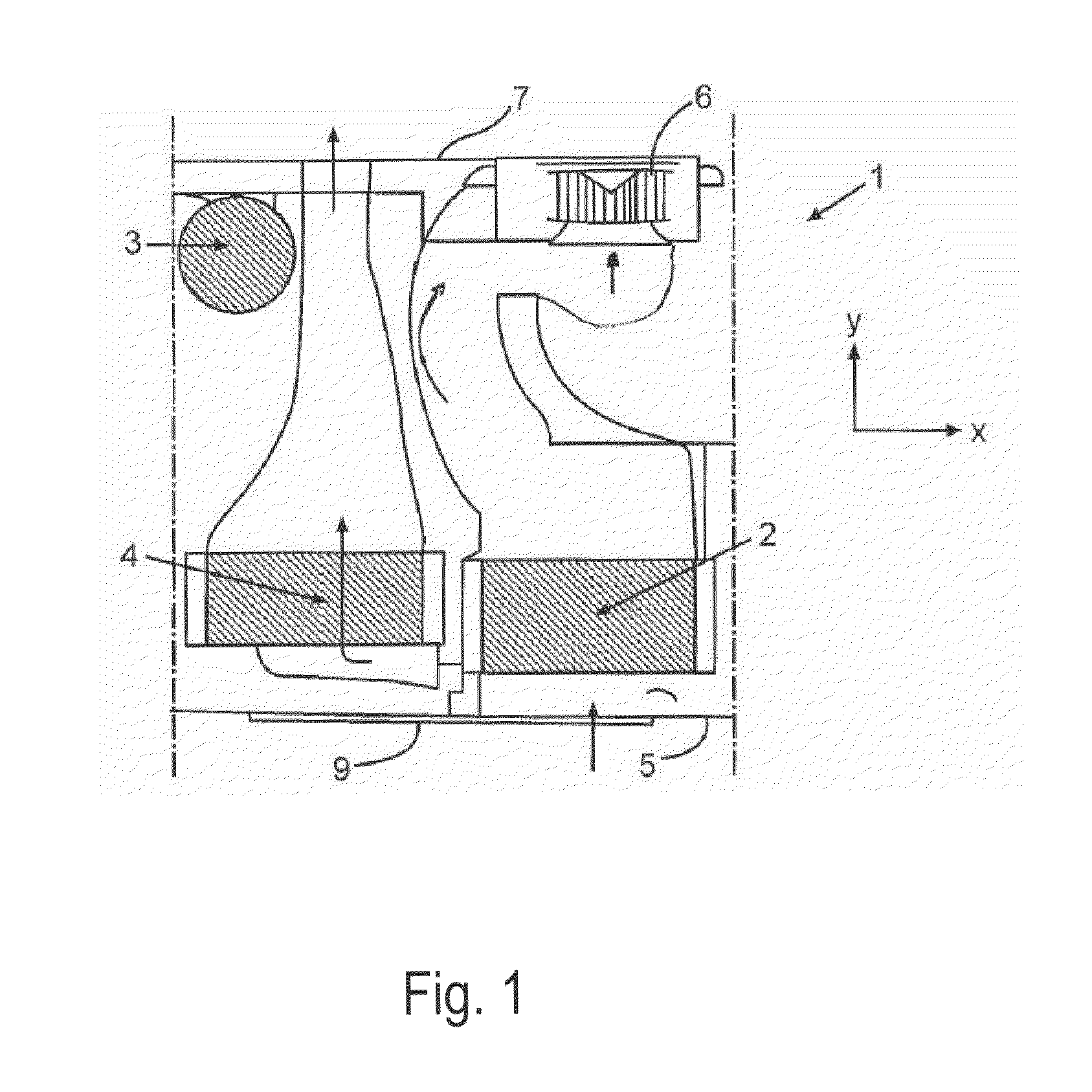Exhaust air dryer with heat exchanger
a technology of exhaust air dryer and heat recovery, which is applied in drying machines, lighting and heating apparatus, and cleaning using liquids, etc., can solve the problems of reducing the airflow volume, deteriorating the performance figures and energy consumption, and exhaust air dryers with heat recovery have failed to establish themselves in the marketplace, so as to reduce the pressure loss
- Summary
- Abstract
- Description
- Claims
- Application Information
AI Technical Summary
Benefits of technology
Problems solved by technology
Method used
Image
Examples
Embodiment Construction
[0040]FIG. 1 shows a schematic top view of the exhaust air dryer 1, where only components essential for explanation of the invention are represented. The exhaust air dryer 1 comprises a heat pump 2, 3, 4, 10 with a condenser 2, which represents the heat source 2, a compressor 3, an evaporator 4, which represents the heat sink 4, and a throttle element 10. In this exemplary embodiment a compressor heat pump 2, 3, 4, 10 is accordingly provided. It is described in detail above, to which reference is made here. A process air fan 6 sucks the ambient air, which, insofar as it is employed in the exhaust air dryer 1 is also generally designated “process air”, as supply air through a frontal housing wall 5 via the condenser 2 and corresponding air ducts according to the arrow representation into the drum 8 functioning as the drying chamber 8 (see FIG. 2). After emerging from the drum 8, the moisture-laden process air is directed according to the arrow representation through the evaporator 4,...
PUM
 Login to View More
Login to View More Abstract
Description
Claims
Application Information
 Login to View More
Login to View More - R&D
- Intellectual Property
- Life Sciences
- Materials
- Tech Scout
- Unparalleled Data Quality
- Higher Quality Content
- 60% Fewer Hallucinations
Browse by: Latest US Patents, China's latest patents, Technical Efficacy Thesaurus, Application Domain, Technology Topic, Popular Technical Reports.
© 2025 PatSnap. All rights reserved.Legal|Privacy policy|Modern Slavery Act Transparency Statement|Sitemap|About US| Contact US: help@patsnap.com



